
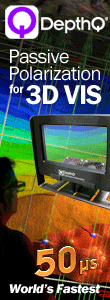

Stereoscopic Displays and Applications XXX (2019)
Conference Proceedings
Proceedings of the Electronic Imaging Symposium
| This proceedings introduction is published as a full SD&A proceedings manuscript which can be cited as: A.J. Woods, N.S. Holliman, G.E. Favalora, T. Kawai, B. Sommer "30th Annual Stereoscopic Displays and Applications Conference - Introduction," in IS&T Electronic Imaging: Stereoscopic Displays and Applications XXX, (IS&T, Springfield, VA, 2019). DOI: TBA |
30th Annual Stereoscopic Displays and Applications Conference - Introduction
Andrew J. Woods1, Nicolas S. Holliman2, Gregg E. Favalora3, Takashi Kawai4, Björn Sommer5
1Curtin University, Australia; 2Newcastle University, United Kingdom; 3Draper, USA; 4Waseda University, Japan; 5University of Konstanz, Germany.
Abstract
This document provides an overview of the 30th Stereoscopic Displays and Applications conference and an introduction to the conference proceedings..
Introduction
The 30th annual Stereoscopic Displays and Applications (SD&A) conference was held from 14 - 16 January 2019 at the Hyatt Regency San Francisco Airport hotel in Burlingame, California.
The 30th annual meeting of the Stereoscopic Displays and Applications conference provided an opportunity to look back at the incredible history of the conference. That history is embodied in the incredible back-catalog of conference papers contained in the SD&A conference proceedings, in the photos and other records contained in the www.stereoscopic.org conference website which has been running for more than 20 years, and in the memories and friendships and collaborations that have been built at the conference over 30 years. With a 30-year history, the SD&A conference remains the premier venue for the dissemination of research on topics relating to stereoscopic 3D displays and their applications. This introduction gives an overview of the conference as a reminder for those who attended and an insight into what happened for those who were unable to attend. A separate paper, “30 Years of the Stereoscopic Displays and Applications conference - Milestones and Statistics” provides a more detailed look at the history of the conference.
SD&A attracts key players in the field: stereoscopic experts from industry and academia presented the keynotes and spoke in the technical presentations. The conference had an excellent technical program covering a wide range of stereoscopic topics.
This year, the conference had 35 oral presentations and another three interactive poster presentations. Three of the conference sessions were jointly held with the co-located conferences The Engineering Reality of Virtual Reality (ERVR) 2019 and The Photography, Mobile and Immersive Imaging (PMII) 2019.
The conference program listing at www.stereoscopic.org/2019 indicates which presentations were presentation only and which have a supporting manuscript and where to find it.
All of the published manuscripts from SD&A 2019 along with the other papers from the 2019 Electronic Imaging Symposium will be published at the IS&T Digital Library: https://library.imaging.org/ei/volumes Since papers from a joint session can only be published in one conference proceedings, some of the papers from the joint sessions will appear in the proceedings of either the ERVR or PMII conference rather than in the SD&A proceedings.
The 2019 SD&A conference program page at www.stereoscopic.org/2019/program.html provides a compiled list of all SD&A papers with direct links to all of the manuscripts presented at the conference. This page will also contain links to videos of presentations from the SD&A conference (where they are available).
All manuscripts from the SD&A 2019 conference and wider Electronic Imaging Symposium are open access which helps improve accessibility and reach – so happy reading!First Day
The first day had three technical sessions. Topics covered included a special session celebrating 30 years of SD&A and two Autostereoscopic Displays sessions. The day also included the Electronic Imaging (EI) Symposium Opening Plenary by Professor Amnon Shashua who is CEO and CTO of Mobileye, Senior Vice President of Intel Corporation, and Professor of Computer Science at Hebrew University, as well as the first SD&A Keynote presentation by Tony Davis from RealD (USA).
The day also included the EI Symposium reception, the annual SD&A 3D Theater Session, and the ritual SD&A conference banquet.
The Monday EI Plenary by Professor Amnon Shashua, had the title "Autonomous Driving Technology and the OrCam MyEye". His presentation summarised the range of technologies required to enable computer driven cars to successfully navigate our complex road networks. He also looked at how OrCam leverages computer vision, situational awareness and language processing to enable the blind and visually impaired to interact with the world through a miniature wearable device. The video is this plenary presentation is available here: https://youtu.be/v5AcdMhgihk
The first SD&A Keynote Presentation was given by Tony Davis, Vice-President of Technology at RealD (USA) and was entitled: "From Set to Theater: Reporting on the 3D Cinema Business and Technology Roadmaps”. Just over 13 years ago, RealD ushered in a new era of digital 3D cinema with 85 cinemas screening the new 3D film “Chicken Little”. Tony’s presentation outlined how the 3D cinema industry is far from stagnant with several new innovations in the works improve the 3D cinema experience.
The 3D Theater Session is a regular highlight of the conference that showcases 3D content from around the world. This year, the following pieces (or segments thereof) were screened:
Competition Category:
1. “Albuquerque Balloon Festival – Mass Ascension” – John Hart (USA)
2. “Backyard Birds 1” – Hélio Augusto Godoy de Souza (Brazil)
3. “Crooked Billet II” – Richard Connew (UK)
4. “desperateBeauty – Strategies (music video excerpt)” – desperateBeauty (UK)
5. “Domino Secret of the Lost World” – Marek Audy (Czech Republic)
6. “Fascination Mountains” – Produced by KUK Filmproduction for psHolix AG (Germany)
7. “Flamenco” – Demetri Portelli and Tony Davis (USA)
8. “Hidden Stereo Treasures” – Creator: Robert Bloomberg; Motion graphics: Steve Andersen and Pad McLaughlin (USA)
9. “Macy’s Flower Show” – E. James Smith (USA)
10. “Metamorphosis” – Michel Patient (France)
11. “Mystery Fire” – Aleksey Osipenkov (Russia)
12. “Platform 6” – Karel Bata (UK)
13. “Space... Spaces!” – Esther Jacopin (France)
14. “The Reaper” – Simon Querez (USA)
15. “The Simple Carnival - Go Away I Like You Too Much” – Jeff Boller (USA)
16. “The Stereoscopic Society” – Kate Sullivan with the Stereoscopic Society (UK)
17. “The Virtual (Reality) Museum of Immersive Experiences” – Volker Kuchelmeister (Australia)
18. “Toylettes in 3D” – Christian A. Zschammer (Germany)
19. “Une Histoire D'amour (A Love Story)” – Julien Charpier (France)
20. “Vikramshila University in 3D” – Royal Tech Media Private Limited (India)
Demonstration Category:
21. “Avengers: Infinity War” – Marvel Studios (USA)
22. “Charlie Chaplin ‘Accidental 3-D’ (from 1928)” – Eric Kurland (USA)
23. “Coco” – Pixar Animation Studios (USA)
24. “Cryogen Children” – Sadie Schiffman-Eller (USA)
25. “Incredibles 2” – Pixar Animation Studios (USA)
26. “Moonlight” – Peter Rose (USA)
27. “Nanoanalysis of an Optoelectronic Device” – Device manufacture: Compound Semiconductor Technologies; Data collection: William Rickard and Charlie Ironside, Curtin University; Visualization: Jesse Helliwell, Curtin HIVE (Australia)
28. “Sangaree (from 1953)” – Kino Lorber; restored by 3-D Film Archive (USA)
29. “Skateboard Park” – Peter Rose (USA)
30. “The Maze (from 1953)” – Kino Lorber; restored by 3-D Film Archive (USA)
We wish to thank all of the contributors who kindly allowed their 3D content to be screened at this 90-minute event. All entries were screened in high quality polarized 3D on the conference’s large-screen projection system.
The producers of the 2019 SD&A 3D Theater were John Stern (Intuitive Surgical Inc., retired), Dan Lawrence (Lightspeed Design), Chris Ward (Lightspeed Design), and Andrew Woods (Curtin University). The 3D content partners for the session were the LA 3-D Movie Festival (USA) and the 3-D Film Archive (USA).
The judges at this year’s event were:
• Miriam Ross from Victoria University of Wellington (NZ), where she is Senior Lecturer in the Film Programme.
• Eric Kurland from 3-D Space, who has worked on 3D productions for Fox and OK GO.
Best-of-Show Live Action category:
“Albuquerque Balloon Festival – Mass Ascension” – John Hart (USA)
John Hart is Professor Emeritus in the department of Atmospheric and Oceanic Sciences at the University of Colorado Boulder. For more of John’s works, see: http://www.hart3d.com
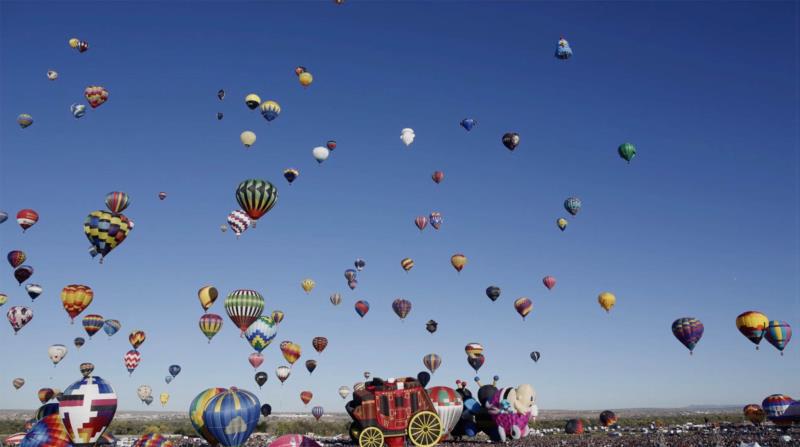
Figure 1. "Albuquerque Balloon Festival – Mass Ascension" by John Hart (USA), Best of Show 3D live action.
Best-of-Show Animation category:
“The Simple Carnival – Go Away I Like You Too Much” – Jeff Boller (USA)
The Simple Carnival is the musical moniker of Pittsburgh-based singer/songwriter Jeff Boller. Jeff created his animated music video, about a boy who has a crush on a girl and subsequently wants to avoid her, over the course of a year and a half. For more of Jeff’s works, see: http://simplecarnival.com
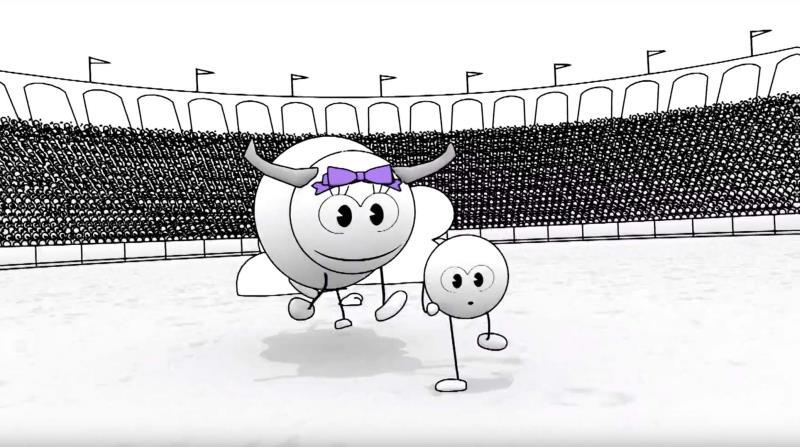
Figure 2. "Go Away I Like You Too Much" by Jeff Boller, Simple Carnival (USA), Best in Show Animation.
The evening concluded with the SD&A conference dinner at Max's Restaurant and Bar in Burlingame - a short walk from the conference hotel. The conference dinner provides a relaxed opportunity to socialize with other conference attendees.
Second Day
The second day of the conference had three technical sessions: Light Field Imaging and Displays, Stereoscopic Vision Testing, and Visualization Facilities (joint session). The day also included the second Symposium Plenary and the symposium-wide Demonstration Session.
The second SD&A keynote, titled “What good is imperfect 3D?” was delivered by Dr Miriam Ross from Victoria University of Wellington in New Zealand. Dr Ross’s thought provoking presentation discussed the use of imperfect three-dimensional representation in media and arts. Her presentation was amply illustrated with various stereoscopic examples using the conference’s stereoscopic projection system.
The second all-of-symposium EI Plenary was presented by Professor Hong Hua from University of Arizona. Professor Hua is a regular attendee and presenter at the SD&A conference and her EI plenary was titled “The Quest for Vision Comfort: Head-Mounted Light Field Displays for Virtual and Augmented Reality”. A video of this presentation is available here:
https://youtu.be/DOy9m3otfZY
During the EI conference awards session, SD&A committee member and past SD&A conference chair, Professor Neil Dodgson, was recognized with an IS&T service award (see Figure 3).
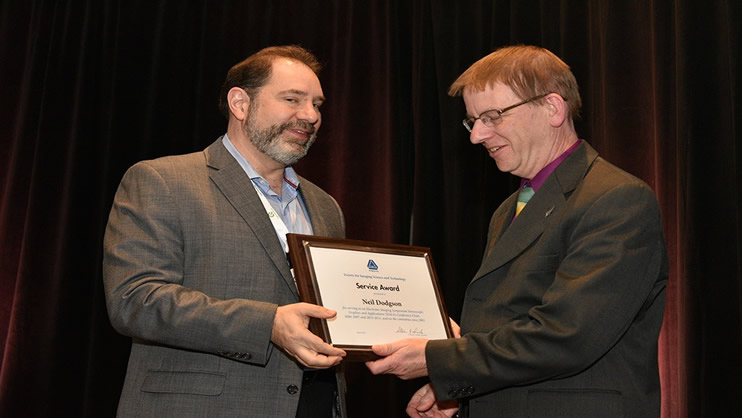
Figure 3. Professor Neil Dodgson (Victoria University at Wellington, New Zealand) receives an IS&T Service Award from IS&T Vice-President Scott Silence. Photo: Stephan Keith.
The last technical session of the day was on Visualization Facilities. This is the third year that this joint session has run as a collaboration between the SD&A conference and the Engineering Reality of Virtual Reality conference. There are very many visualisation facilities around the world, often using immersive displays with stereoscopic and VR capability, and this session provides an opportunity for authors and topics from those facilities to present at the SD&A and ERVR conferences.
On Tuesday evening, the demonstration session was busy with enthusiastic conference attendees.
The following stereoscopic related demonstrations were presented at the session:
- Shawn Frayne from Looking Glass Factory (USA) demonstrated two sizes (8.9” and 15.6” diagonal) of their The Looking Glass autostereoscopic 3D display.
- Hideki Kakeya, from University of Tsukuba (Japan) demonstrated a full-horizontal parallax super-multiview display, which realizes a light field around the eyes to induce proper focal accommodation of the viewer.
- Andrew Woods from Curtin University (Australia) illustrated a Camera Based Projection Mapping System for Non-Flat Surfaces.
- Eric Kurland from 3-D Space (USA) (with assistance from Ilicia Benoit) setup a “3-D Space mini-museum” with a huge array of 3D equipment, viewers, games and other 3D items. Eric and Ilicia’s demonstration at the 2018 conference was equally popular so we are glad they were able to reprise the setup this year (see Figure 4).
- Dominique Meyer from University of California San Diego (USA) and Dan Sandin from the University of Illinois at Chicago (USA) demonstrated StarCAM - A 16K stereo panoramic video camera with a novel parallel interleaved arrangement of sensors.
- Björn Sommer from University of Konstanz (Germany) presented a Head-mounted Display setup showing a stereoscopic 360 degree visualization of birds flying from Konstanz to Africa which was part of the ICARUS 2018 exhibition at the island of Mainau.
- Rolf-Dieter Naske from psHolix AG (Switzerland/USA) showed super multiview videos on a 15” laptop of standard size fitted with a special 3D screen.
Some additional items of 3D equipment that were spotted included:
- A RED Hydrogen One mobile phone with an autostereoscopic display and 3D camera in the hands of David Mark.
- A Vuze+ 360 3D video camera in the hands of Justus Ilgner.
The demonstration session was curated by Björn Sommer (University of Konstanz) and Donna Smith (IS&T).
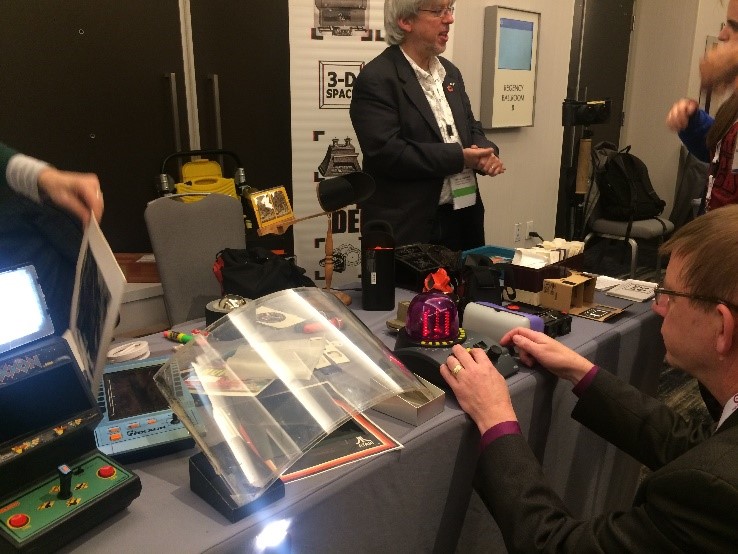
Figure 4. The 3-D Space mini-museum by Eric Kurland and Ilicia Benoit. Photo: Andrew Woods.
As with every year, there were also a number of demo presentations from other conferences which enriched the program for all attendees.
A selection of photographs from the demonstration session will be available via the SD&A conference website www.stereoscopic.org
Additionally, in the Symposium Exhibition Area Vision TriTeQ (www.visiontriteq.co.uk) displayed two of their new two-view autostereoscopic displays with applications in industrial inspection and CAD visualisation. One of the systems was connected to a stereoscopic microscope providing close-up views of electronics circuit boards.Third Day
The third day of the SD&A conference had the third SD&A keynote, the third EI plenary, and three technical sessions: “360, 3D, and VR” (joint with the ERVR conference), Autostereoscopic Displays III, and another joint session “Light Field Imaging and Display” (joint with the PMII conference).
The third Keynote speaker for the 30th annual SD&A conference was Mark Bolas from the Mixed Reality team at Microsoft Corporation. Mark’s presentation was titled “Beads of reality drip from pinpricks in space” and all attendees received a free ‘bookmark’ give-away at the beginning of the presentation. The purpose of the bookmark was slowly revealed during the presentation and reinforced one of the themes of his presentation about perspective and point-of-view. Mark started the ERVR conference in 1994 with Scott Fisher so it was great to have Mark back to present on his latest work and his road there.
The third and final all-of-symposium EI plenary presentation was presented by Paul Debevec from the Google VR team at Google. His presentation was titled “Light Fields and Light Stages for Photoreal Movies, Games, and Virtual Reality” (see Figure 5). A video of this presentation is available online: https://youtu.be/psoqreSLY-Y
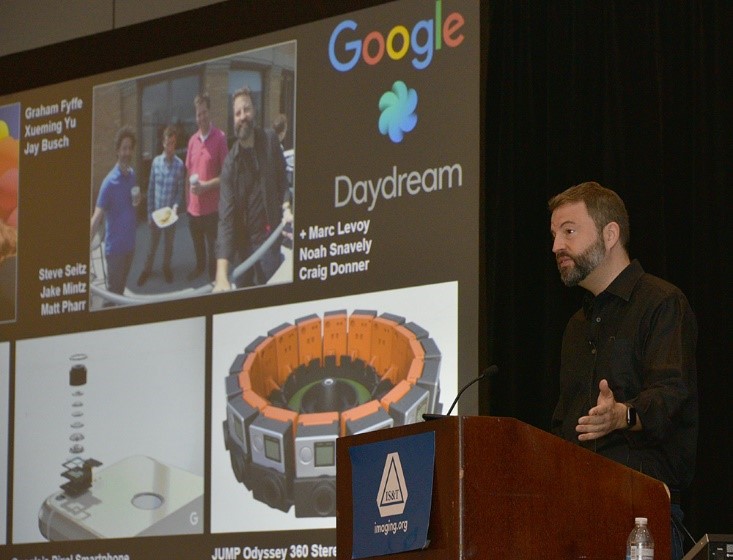
Figure 5. Paul Debevec (Google, USA) delivering his plenary presentation.
In the afternoon was the special invited “Light Field Imaging and Display” joint session with the PMII conference organized by Gordon Wetzstein from Stanford University.
The third day concluded with the interactive paper / poster session. There was lots of energy in the hall with presenting authors at their posters kept busy with questions from the attendees.
Discussion
Most of the technical sessions in the SD&A conference hall were video recorded including the three SD&A keynotes. The content is available online via the SD&A conference website. Links are provided to videos from the 2019 conference program page when available: www.stereoscopic.org/2019/program.html
It was our honour to have three esteemed keynote presenters at the 30th annual SD&A conference – Tony Davis, Miriam Ross and Mark Bolas (see Figure 6). The purpose of the keynote presentations at the SD&A conference is to give speakers more time to discuss their topic of expertise and also provide audiences with an interesting and insightful experience.
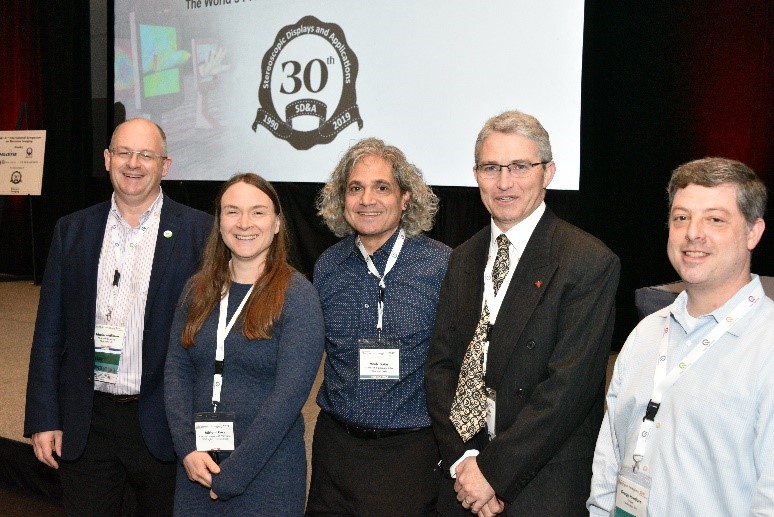
Figure 6. Some of the SD&A conference chairs with two of the SD&A 2019 Keynote speakers: (L-R) Nick Holliman, Miriam Ross, Mark Bolas, Andrew Woods and Gregg Favalora. Photo: Stephan Keith.
In addition to the prizes for the 3D Theater, a final prize was offered at the conference for the best use of stereoscopic presentation tools during the technical presentations - chosen by the SD&A committee.
The winner for the best use of the stereoscopic projection tools during the SD&A conference presentations was:
“Opening a 3-D museum - A case study of 3-D SPACE” by Eric Kurland (see Figure 7) from 3-D SPACE in Los Angeles (USA) outlining how he realized his dream of starting a 3D museum.
Eric Kurland’s presentation was outstanding in that he combined 3D video footage of his newly-opened museum, along with slides containing different 2D layers placed in 3D space to differentiate content types. He presented stereoscopic stills from 3D movies and 3D photos of items held in the “3-D Space” museum including items which are used to watch stereoscopic 3D content, such as the long-standing View-Master®.
A special thanks in this context goes to the many authors who integrated the use of stereoscopic display technology in their presentations using the conference’s large 3D projection screen! Eight presentations made use of this display technology, and we are looking forward to increasing the number of 3D presentations in the future! It is possible to easily mix 2D and 3D content in author presentations using Powerpoint, Keynote or any other presentation software you might prefer – like Tony Davis and Miriam Ross did in their presentations – or you may prefer to do the whole presentation using 3D technology, just like Eric Kurland did.
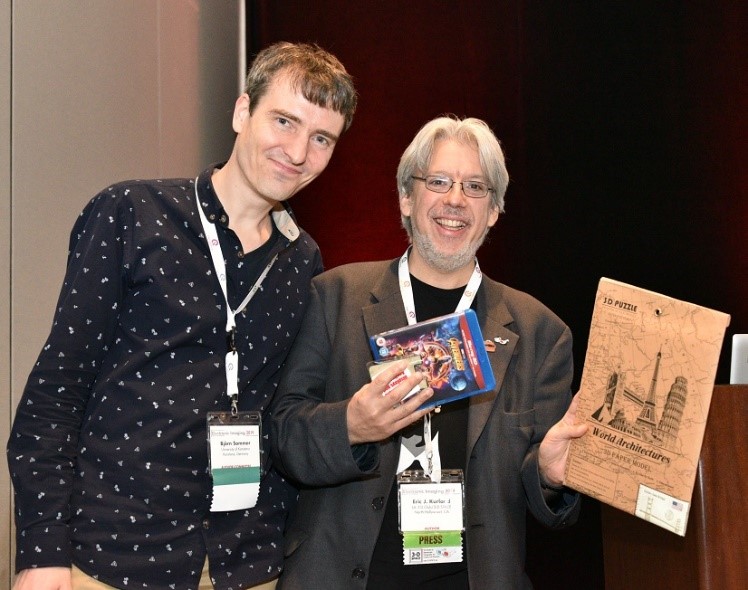
Figure 7. Eric Kurland receives his prizes from SD&A committee member Björn Sommer. Photo: Stephan Keith.
Many individuals and companies contributed in various ways to the success of this year’s SD&A conference:
- We appreciate the support of this year’s stereoscopic projection sponsors: DepthQ Stereoscopic by Lightspeed Design Group (USA), and Christie Digital (USA). The ability to present high-quality large-screen stereoscopic images and video at the conference is vital to the success of the conference.
- This year we had a Christie Digital Mirage HD14K-M projector (1920 × 1080 resolution, 16:9 aspect ratio, 3 chip DLP, 14,000 ANSI lumens, provided by Christie Digital) projecting onto a 4.9 × 2.7 meter silvered screen (provided by STRONG / MDI Screen Systems), outputting frame-sequential circularly-polarized 3D (at 120Hz) by way of a DepthQ active polarization modulator (provided by Lightspeed Design). The system was driven by a DepthQ Stereoscopic Media Server for playback of all of the stereoscopic video content shown during the 3D Theater. Dan Lawrence from Lightspeed Design setup, configured and ran the 3D projection system.
- Many thanks to the staff from Spectrum Audio Visual led by Adrian Romero who provided audio-visual support on-site.
- We very much appreciate the dedicated support of Stephan R. Keith (SRK Graphics Research), who again had a multi-tasked role at this conference, including supporting the presentation needs of all of our presenters.
- We are grateful to all of the providers of 3D content for allowing their content to be shown to the conference audience at the 3D Theater Session.
- Thanks to the demonstration session presenters for bringing equipment to show – especially to the presenters who brought equipment from overseas.
- The conference committee plays an important role throughout the year, ensuring the correct technical direction of the meeting. Sincere thanks go to our founding chair, John Merritt, and our committee: Neil Dodgson, Davide Gadia, Hideki Kakeya, Stephan Keith, Michael Klug, Björn Sommer, John Stern and Chris Ward. (see Figure 8)
- Thanks also to the staff at IS&T - the organizing society instrumental in organizing all manner of aspects for the meeting – and in particular Suzanne Grinnan, Marion Zoretich, Ann McCarthy and Donna Smith.
- Most importantly, we thank the conference authors and attendees, who ultimately made this meeting such a successful event. Thanks especially to those who travel a long way to join us each year.
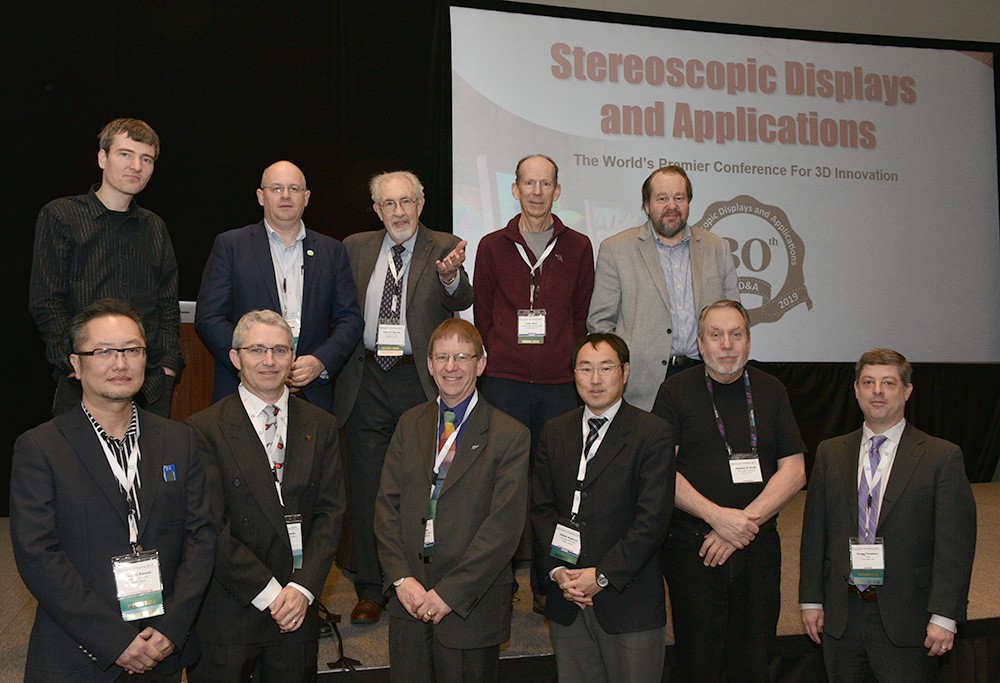
Figure 8. Most of the SD&A 2019 conference chairs and committee: (Top L-R) Bjorn Sommer, Nick Holliman, John Merritt, John Stern, Chris Ward, (Bottom L-R) Takashi Kawai, Andrew Woods, Neil Dodgson, Hideki Kakeya, Stephan Keith, and Gregg Favalora. Photo: Justus Ilgner.
We are also grateful to Ilicia Benoit who produced several 30th Anniversary SD&A branded keepsakes to share amongst the conference attendees – see Figure 9 below.
The year count of the SD&A conference has traditionally been signified in the title of the conference using roman numerals. This being the conference’s 30th year, several of our conference community raised the alarm that the roman numerals for 30 has another connotation – think about it... If anyone did accidentally attend the 30th annual SD&A conference for that other reason they would have been disappointed, but they would have had plenty of 3D to keep them entertained!Conclusion
Conference activities do not stop at the end of the annual meeting. The SD&A conference website and LinkedIn group provide a focus for conference activities during the time between conferences. We will soon be actively seeking abstracts for the 2019 conference, with a submission deadline in mid-2019 – see the SD&A website www.stereoscopic.org for details and deadlines. The website also has an extensive collection of photographs highlighting the activities of past conferences. In addition, the website hosts the stereoscopic virtual library, which contains several historically important books that have been digitized, in full, into PDF format, and are available for free download.
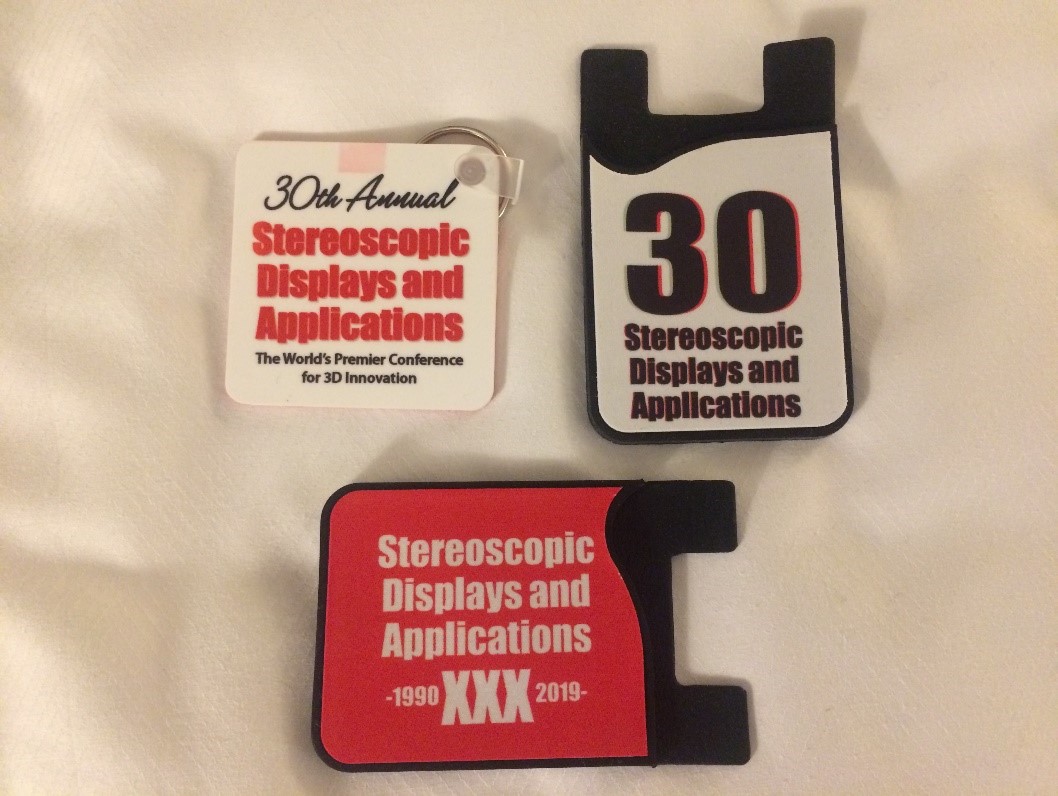
Figure 9. Some of the SD&A 30th Anniversary key-rings and card-holders produced by Ilicia Benoit.
The SD&A conference runs an active LinkedIn group which is available at:
www.linkedin.com/groups?gid=1945944
At one stage Linkedin was limiting its email notification so if you’re not a regular user of Linkedin and you would like to be kept up-to-date with SD&A conference activities via email, it would be good to check your notification settings and perhaps sign-up to our conference mailing list. Visit here to sign up:
https://lists.curtin.edu.au/mailman/listinfo/sdalist
The 2019 conference was live-Tweeted by @SDnAconf and other attendees. Check out the conference Twitter feed for details:
Photographs from this year’s conference will be available in a special album on Flickr:
https://www.flickr.com/photos/124926259@N05/albums/with/72157665961383588
You can visit the conference website to gain an understanding of the past, present, and future of stereoscopic imaging. Please think now about submitting a paper or attending next year’s conference. The Stereoscopic Displays and Applications conference website is at:
www.stereoscopic.org
Next year’s SD&A conference will be held during the period 26-30 January 2020 as part of annual IS&T Electronic Imaging Symposium, again at the Hyatt Regency San Francisco Airport hotel in Burlingame - within a short distance of the San Francisco International (SFO) airport. The hotel provides fast, convenient access from the airport with a free regular shuttle. The symposium and conference have been held at this hotel now for several years. The open internal atrium of the hotel is an iconic and picturesque aspect of the venue.
The 2020 SD&A conference will continue a tradition of presenting and demonstrating the latest technologies relevant to stereoscopic displays and applications. Please consider attending, presenting, or demonstrating at the 2020 event. We hope to see you there!
Author Biographies
Andrew Woods is Manager of the HIVE Visualisation Facility and a Research Engineer at the Centre for Marine Science & Technology - both at Curtin University. His research interests are in stereoscopic 3D imaging, visualisation, 3D reconstruction, 3D cameras and displays, video electronics, underwater vehicles (ROVs), and engineering software development, with applications in offshore oil and gas, and maritime archaeology. He has BEng and MEng degrees in electronic engineering and his PhD was on the topic of crosstalk in stereoscopic displays.
Nick Holliman is Professor of Visualization at Newcastle University researching the science and engineering of visualization and visual analytics including the fundamental challenges of visualizing big data. This includes working with psychologists to understand how the human visual system processes information, developing novel computational algorithms for the control of image content and demonstrating how these algorithms work in practice in cloud-based software tools and award winning stereoscopic 3D visualizations. He has worked in both industrial and academic environments and is experienced in delivering commercial impact from research outputs.
Gregg Favalora is Principal Member Technical Staff at Draper (Cambridge, MA, USA) in the Division of Positioning, Navigation and Timing. He holds a BS (EE) from Yale University and an SM from Harvard University. From 1997 - 2009, Gregg was CTO of autostereoscopic display developer Actuality Systems, Inc., which created the Perspecta volumetric display and other advances in visualization.
Takashi Kawai is a Professor in the Department of Intermedia Art and Science, Faculty of Science and Engineering, Waseda University, Japan. He received his Ph.D., M.A. and B.A. in Human Sciences from Waseda University in 1998, 1995 and 1993, respectively. His research interests include ergonomics and human factors in advanced imaging technologies such as stereoscopic imaging, virtual / augmented / mixed reality and cross-modal systems. He is a Certified Professional Ergonomist (CPE).
Björn Sommer is a Research Fellow at the University of Konstanz where he is working on Immersive Analytics of collective behavior as well as mesoscopic and molecular data. He has experience since more than a decade in the development of 3D-stereoscopic applications. At Bielefeld University, he did his B. Sc. in Media Informatics, M.A. in Interdisciplinary Media Sciences, and a PhD in Bioinformatics. From 2015-2016 he was working as a Research Fellow at Monash University, Melbourne, Australia. At SD&A 2019 he started to perfect the art of the Tim Tam Slam.
